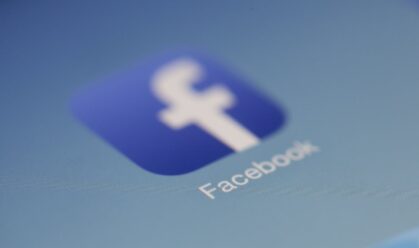Today’s consumers are fast-paced, overloaded with information, and short on time. We skim content, interact with chatbots, and gravitate toward convenience and instant gratification. We spend 6.5+ hours a day online, including almost 2.5 hours on social media.

In this new reality, it’s imperative that brands humanize and connect with their audiences more meaningfully.
Enter brand storytelling.
Research from Google and Talk Shoppe found that virtually all consumers agree that “good content” tells a story. Brand stories help otherwise faceless organizations build an emotional connection with their audience, leading to higher engagement, loyalty, and sales.
But what does engaging storytelling in marketing actually look like? To answer that question, we’ve rounded up 17 of the best recent brand storytelling campaigns and discussed what makes them so effective:
1. F1 Uses Storytelling To Tap Into New Markets
Sports documentary series Formula 1: Drive to Survive (DTS) is a case study of how compelling storytelling can help brands break into previously untapped markets.
The Netflix show focuses less on the technical practicalities of building and driving the world’s fastest cars and more on the people who make it all possible. Audiences get a unique insight into the pressures facing drivers desperate to win a new contract, mechanics striving to execute the perfect pit stop, and team bosses battling to balance the books.
In other words, F1’s bosses use the show to tell a story.
Since the first season of DTS debuted on Netflix back in 2019, interest in F1 from fans in the US has seen a huge uptick:

It’s an oversimplification to attribute all this growth to DTS alone — the sport’s owners have also been proactive in building brand awareness on social media. However, one survey found that 34% of US adults are now interested in F1, with over one-quarter attributing this to Drive to Survive.
Impressive stuff.
2. Patagonia Demonstrates Ethical Credentials Through Long-Form Storytelling
Patagonia is regularly named among the most ethical, eco-friendly, and sustainable brands. This is a big deal, given that 82% of shoppers prefer a consumer brand’s values to align with their own.
Clearly, it’s in Patagonia’s best interests to promote these ethical credentials, and storytelling is the perfect platform for this. The brand’s YouTube channel has almost half a million followers and over 1,500 videos, many spotlighting a wide range of good causes.
Patagonia isn’t afraid to dive deep into a topic, with many of its videos lasting 30+ minutes. For example, take a look at What The Hands Do.
This video tells the story of two rock climbers who use their passion to “cultivate joy and connection” in their communities and “ create opportunities for meaningful growth.”
This commitment to long-form storytelling helps to position Patagonia as a brand that’s serious about ethical issues.
3. HP Highlights Positive Environmental Impact
HP is another company well aware of the benefits of discussing eco-friendliness and sustainability.
The brand has built a YouTube playlist comprising dozens of videos focusing on its sustainable impact — including projects aimed at tackling ocean plastics in Indonesia, boosting recycling in Haiti, and counteracting deforestation in Brazil’s Atlantic Forest:
This storytelling communicates the results of HP’s environmental efforts without blinding viewers with science.
4. Volvo Showcases Safety Innovations
If I asked you to picture a car advertisement, I’m guessing you’d think of some artsy shots of a motorist driving through a dramatic landscape — mountains perhaps, or maybe desert — accompanied by an inspiring voiceover.
There’s a reason those ads are often all style and no substance: it’s hard to make car features and specifications sound exciting, especially in a 30-second TV spot.
That’s why Volvo communicated its safety-related innovations through storytelling content on YouTube.
The Safety in Mind campaign includes eight videos that have generated a combined 1.6+ million views. These videos pose questions like “What if your car could see beyond the human range?” and answer them by telling a story. All while reinforcing the message that Volvo is striving toward a future in which car crashes never happen.
This is much more compelling than an advertisement about airbags or crash test results.
5. Airbnb Goes Back To Its Roots
Airbnb has recently been the subject of numerous negative headlines regarding its role in pricing locals out of property markets worldwide. At the same time, the company found itself grappling with a customer base looking to tighten its belts in the face of increased living costs.
The solution? Airbnb returned to its roots by introducing a new feature called Airbnb Rooms, allowing travelers to stay in affordable private rooms rather than renting an entire house or apartment.
To raise awareness, the brand shared a video featuring its first-ever hosts, Joe and Brian:
All of which helped Airbnb demonstrate that traveling is all about human connection.
And what’s the best way to experience some of that human connection while you travel? Staying with a local host.
6. Siemens Celebrates Innovation
Siemens is a household-name technology company. But how many of us could explain what they do?
That’s a big problem from a marketing perspective. If people don’t understand the “thing” you’re selling, it’s tough to promote.
Siemens decided the answer was to use storytelling to cement its commitment to innovation. The company runs its Inventors of the Year competition and shares the stories behind some of its most exciting winners.
This strategy encourages consumers to view Siemens as an innovative company, even if they don’t know the details of its products and services.
7. Red Sox Promotes Community Commitment
Once upon a time, promoting a sports franchise was comparatively simple: mention how many trophies you won and how fantastic your stadium is, then watch the crowds come rushing in.
Today, things are a little more complicated. Fans want to feel their team is committed to more than just on-field success.
Once again, storytelling campaigns provide the answer.
The Boston Red Sox baseball franchise gives us a perfect example in this video promoting its Lindos Sueños program.
Ten American teen boys travel to the Dominican Republic each summer to perform community service and play baseball.
This campaign demonstrates how sports unite communities while positioning the Red Sox as a caring brand.
8. The Inkey List Discusses Beauty Through the Ages
Unless you’re a huge brand with a massive following, it’s hard to drum up interest in a new product. There are just so many other options out there already. But if you can tell a compelling story, you’ll give consumers a reason to care about whatever you’re launching.
Skincare brand The Inkey List is aware of this. To promote the launch of its Bio-Active Repairing and Plumping Moisturizer, the company rolled out a storytelling campaign titled Beauty Through the Ages, featuring conversations with real customers discussing their positive views on aging:
BIOACTIVE_STORYTELLING_BLOG STITCH from The Inkey List on Vimeo.
This strategy helps the brand’s new moisturizer stand out in a market saturated with products to fight aging.
9. Zacapa Shares Its Brand Story
Promoting a new product might be difficult, but marketing a new brand is even more challenging, especially if you’re in a crowded and highly competitive industry like the alcohol trade.
To help it stand out in a market full of big names, rum brand Zacapa focused on sharing its brand story, which is all about its connection with the Guatemalan landscape and culture:
That way, Zacapa isn’t just selling yet another type of rum — it’s selling an idea. Which makes the whole campaign feel more engaging.
As Niamh Burns, Global Head of Zacapa at Diageo, explained: “Our mission extends beyond showcasing our rums into an immersive experience that resonates with our diverse audience around the world.”
10. Gucci x The North Face Go Beyond Traditional Influencer Marketing
Influencers are a great fit for telling a brand story because they’re real people. Find the right influencer—one who aligns with your values and audience—and their personality will rub off on you, helping to communicate who you are as a brand.
As consumers become increasingly savvy, we’ve seen a rise in more authentic influencers—people who care passionately about their hobbies, interests, and the content they post.
Francis Bourgeois is a great example. A fanatical trainspotter renowned for his enthusiastic approach and boundless energy, he has amassed 2.3 million followers on Instagram and 3.1 million on TikTok by simply being himself. That made him an ideal, if surprising, choice to promote the brand collaboration between Gucci and The North Face.
Bourgeois and the campaign’s underlying theme—exploration and discovery—naturally synergize. The vintage aesthetic also matches the influencer’s obsession with steam trains.
11. Goldfish Crackers Combines Storytelling Advertising & AR
Augmented reality is nothing new; it’s been six years since we all got fixated on Pokémon Go. But while AR seemingly offers exciting brand opportunities, marketers have often struggled for meaningful ways to incorporate the technology in their campaigns.
Goldfish Crackers got it right by adding a storytelling layer to an augmented reality lens for Snapchat. It created an online game that challenged teenagers to test their attention spans. It used eye-tracking technology to assess whether they could focus on a slow-moving image of a Goldfish Cracker for longer than nine seconds. It sounds weird, but it works.
The point here is that Goldfish Crackers wasn’t just telling its audience that they struggle to pay attention; it showed them, all while keeping its product front and center of the messaging.
12. McDonald’s Tells a Story In 235 Characters
War and Peace is a story, but so is “For sale: Baby shoes, never worn.” In other words, telling a brand story needn’t be a long, drawn-out affair leveraging multiple content types and platforms.
In our next example, McDonald’s shows how it’s perfectly possible to tell a story in a single tweet:
can i get uhhhhhhhhhhhhhhhhhhhhhhhhhhhhhhhhhhhhhhhhhhhhhhhhhhhhhhhhhhhhhhhhhhhhhhhhhhhhhhhhhhhhhhhhhhhhhhhhhhhhhhhhhhhhhhhhhhhhhhhhhhhhhhhhhhhhhhhhhhhhhhhhhhhhhhhhhhhhhhhhhhhhhhhhhhhhhhhhhhhhhhhhhhhhhhhhhhhhhhhhhhhhhhhhhhhhhhhhhhhhhhhh
— McDonald’s (@McDonalds) October 28, 2020
In just 235 characters, the brand uses visual storytelling—the elongated “uhh”—to communicate something that happens daily at drive-throughs and fast-food counters worldwide. It rings true for all of us and makes us picture the whole act of ordering a Big Mac.
13. Spotify Makes Music Personal
Whether you’re one of the world’s 615 million Spotify users or not, you’re likely familiar with Spotify Wrapped, the streaming service’s personalized annual roundup of our listening habits. Every year, Spotify users trip over one another to share their top artists and favorite songs.
In this example of brand storytelling advertising, Spotify plays into what makes our music preferences unique, such as obsessively listening to the same song on repeat:
This is a common theme throughout our storytelling roundup: telling a story makes a faceless brand or service feel personal and human, which makes us feel more positively toward it.
14. Heineken Connects With a Global Audience
Brand storytelling campaigns face an innate challenge: the larger the brand and the broader the audience, the harder it is to build a meaningful connection.
It’s one thing telling a brand story that resonates with a particular demographic in a single country, state, or city. But it’s far harder to connect with audiences on a truly global level. How can you find common ground that will be understood and enjoyed by consumers across the world?
Heineken did it by tapping into the timeless consumer desire for work-life balance. This trend is particularly relevant in a post-pandemic world, with the average home worker spending more than two hours a day longer on their computers than they did before the coronavirus crisis.
The lager brand could have simply said: “Put down your laptop and buy a beer.” But it took a storytelling-centric approach by developing a device called The Closer, which automatically shuts down your work applications when you crack open a frosty one:
To address the growing work-life imbalance, Heineken launched a campaign around The Closer, a Bluetooth-enabled device that closes work applications when users crack open a beer.
But it’s not really about the device; it’s about our desire to spend less time staring at screens and more time with our loved ones. Heineken is at the forefront of this narrative.
15. NFBC Leverages Multimedia Storytelling
We all have our preferred means of learning new information. Some are visual learners, some prefer to read or listen, and some are more hands-on.
This presents another challenge to brand storytelling: How can you effectively communicate your story to a wide audience while considering all those different learning styles?
One approach is to leverage multiple content formats in your storytelling campaign like the National Film Board of Canada does in our next example.

It used a combination of photography, video content, and interactive maps to tell the story of a bear rescued from captivity and released back into the wild. Each content type complements the others, creating a more immersive storytelling experience.
16. Dove Brings Storytelling to an Existing Campaign
Dove has been promoting “Real Beauty” for over two decades. Past campaigns have focused on showcasing real people rather than models who conform to traditional beauty standards.
In our next example, Dove took a different tack with its “reverse selfie” ad, which highlights the harmful effects of social media on body image and appearance:
This example demonstrates that brand storytelling doesn’t require marketers to tell a whole new story; you can use it to further your existing campaigns and messaging.
17. Google Humanizes Search Data
Alphabet, Google’s parent company, has more than 180,000 employees. Yet it’s a distinctly unhuman company. Its core “product” is built around an algorithm that dispassionately presents us with the information we seek. It’s useful but doesn’t necessarily engender feelings of warmth and positivity toward the brand.
Google’s solution was to launch its annual Year in Search roundup, which is kind of like Spotify Wrapped but for search data:

It allows the company to remind us that each search isn’t just another faceless data point; it reflects real people’s desires, curiosities, and sometimes fears.
For instance, the 2022 Year In Search featured a whole environmental section, with wildfires and flooding becoming the top global search topics in July 2021. This demonstrates how storytelling can be invaluable for tech brands seeking to build deeper, more human relationships with their audiences.
Want to learn more about building a community and engaging your audience? Sign up for one of our upcoming social media strategy summits.









